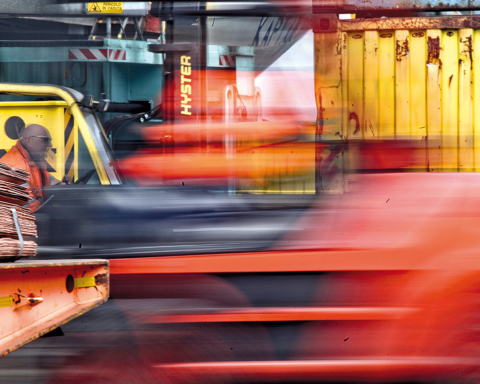The gamble of a lifetime? it’s the Darsena Europea, the seaward expansion project with which the port of Livorno hopes to reach new traffic targets.
With the forthcoming completion of the facility, Livorno port will find itself handling 1.2 to 1.6 million TEUs. Millions of twenty-foot containers will therefore have to be unloaded and forwarded inland, with inevitable negative repercussions on the operational efficiency of transport services.
Clearly, road haulage alone cannot cater for the new traffic needs. That is why it becomes imperative to also focus on the railway.
What are the development opportunities for Tuscan intermodality and what are the priorities of the North Tyrrhenian port network? These are the questions that Livio Ravera, CEO at Mercitalia Shunting & Terminal, a company part of Mercitalia – Gruppo FS Italiane – entrusted with the exclusive management of the port’s rail shunting operations since 2021, tried to answer.
“The results so far this year have been more than satisfactory,” Mr. Ravera told Port News. “We have supported the growth that the port has experienced, investing in human resources and our locomotive fleet, acquiring a new state-of-the-art locomotive.”
The first half of 2022 closed with a 56.2% increase in the total number of trains calling at the terminal: 1368 trains and 21,975 wagons (+39.3% compared to the same period last year). Ahead of the total figures for the whole year, according to Mr. Ravera these results are an important sign for Livorno port that traffic is booming.
“The port benefits from an enviable strategic geographical position,” he says, adding that now more than ever before it’s essential “to follow up on the important project that the North Tyrrhenian Port Network Authority is pursuing together with RFI (the Italian Railway Network- Translator’s Note ) with the aim of providing the system with a competitive edge.”
He is referring to the Raccordo project, recently financed with the signing of the RFI 2022-2026 Programme Contract.
Together with the overpass between the port and the Vespucci Freight Village, already financed and under construction, the stretch of track with the line extending from Pisa to Vada, south of Livorno, represents a fundamental link for avoiding the Romito cliff tunnels, which are now unsuitable freight trains, and to allow the port to connect via the Pisa bypass to the Florence railway junction and, therefore, to the high-speed freight line.
“It is the definitive link to the European corridors,” says Ravera. “Once this work is completed, goods can be forwarded more quickly and efficiently to the relevant markets, allowing the port to increase its handling capacity.”
The aim is to create the conditions to increase the percentage of containers being transported by train up to 25% by 2030, with a medium-term forecast that envisages 30% of containers travelling by train. “This is a goal that is not only feasible but necessary to keep up with the development and potential of the port of Livorno,” Mr. Ravera concludes.
Translation by Giles Foster



